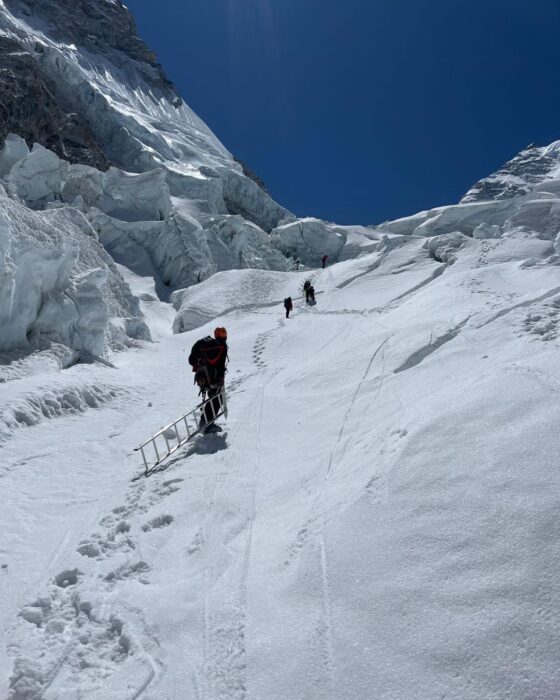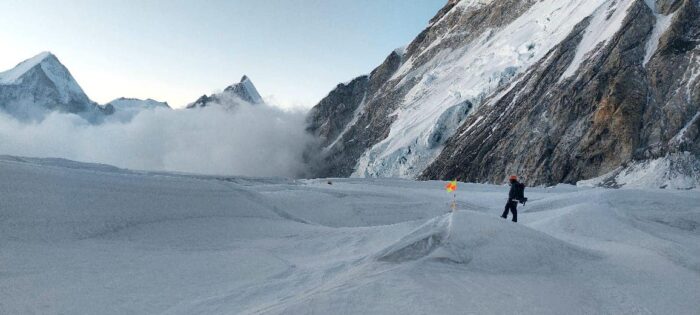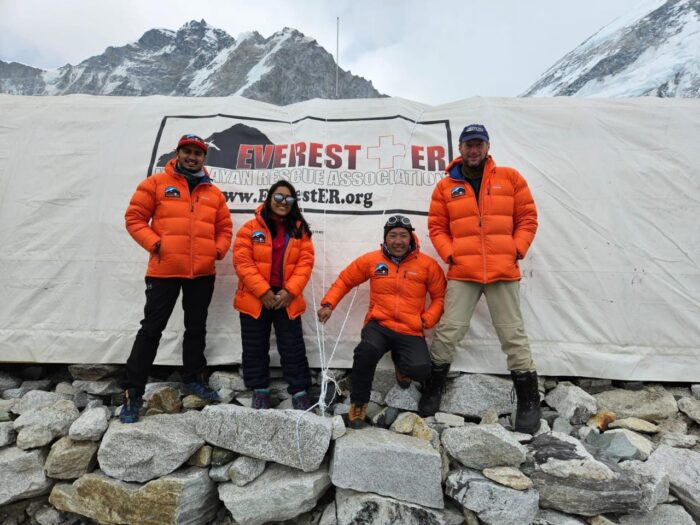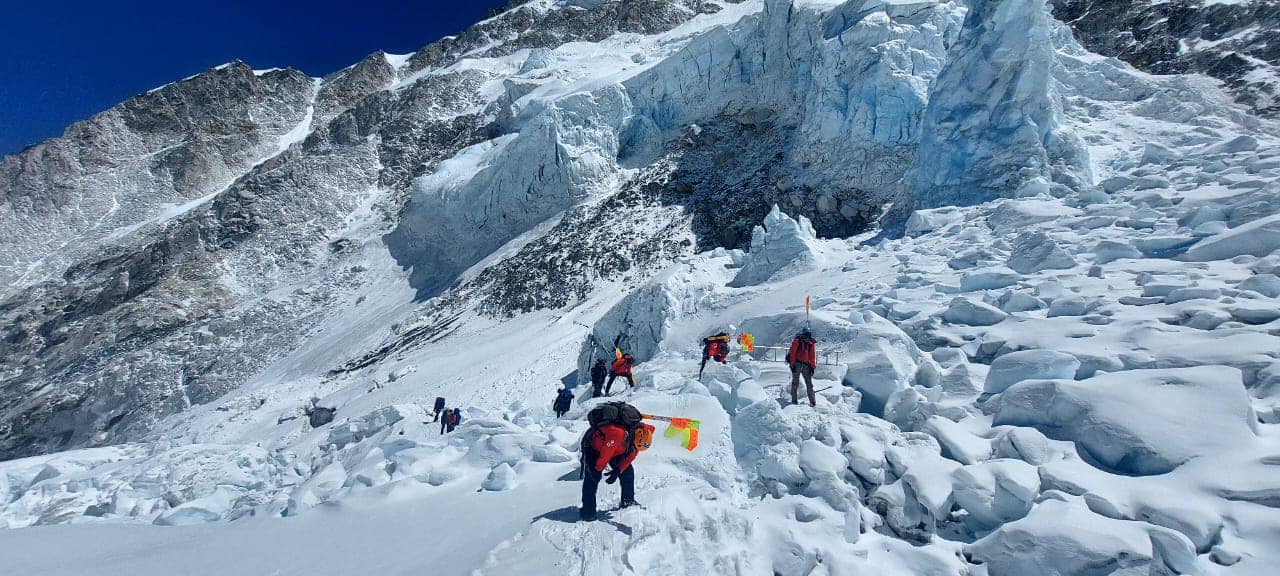The route through the Khumbu Icefall has finally opened. With this, dozens of heavily laden workers are heading up to build Camps 1 and 2. Yet the route through the Icefall is more treacherous than usual, and everyone is advised to spend as little time as possible there.

Ice Doctors on the upper sections of the Icefall. On the left, the seracs of the West Shoulder. Photo: SPCC
Ice Doctors Ang Sarki Sherpa, Dawa Nuru Sherpa, Pemba Tshering Sherpa, Ngima Tenzi Sherpa, Ngawang Chimmi Sherpa, Dawa Chirri Sherpa, Dawa Jangbu Sherpa, and Mingma Gyaljen have worked hard on the route. It took them three attempts to finish it, resulting in long delays.
Last winter was particularly dry, and the lack of snow has made the jumble of seracs in the Icefall especially difficult. The route requires a lot of ladder crossings. It also passes close to the West Shoulder, which bristles with seracs, increasing the overall danger.
The Ice Doctors will monitor the route daily and take action as soon as they notice any changes in the ice above them. Still, they are asking that everyone take extra precautions:

An Ice Doctor looks back toward Base Camp from the Valley of Silence near Camp 1. Photo: SPCC
Tempting airlifts
This year, sherpas will fix routes on Everest and Lhotse as usual, but also on Nuptse. Madison Mountaineering has a commercial group on the mountain. For the time being, they will be alone on the 7,861m peak.
Meanwhile, Asian Trekking will attempt Pumori, for an FKT attempt by American ultrarunners Tyler Andrews and Chris Fisher, and for normal climbers.
Climbers unaffected
Garrett Madison told ExplorersWeb that the delays are not a problem for most of his clients: “We start a little later than most teams, so the delay doesn’t affect us,” he said.
Other teams have used the time to practice their ice climbing skills around the Khumbu Glacier or to acclimatize on trekking peaks nearby. Commercial teams will minimize the number of times their clients go through the Icefall. If they will breathe bottled oxygen from Camp 2, they may only need to go across twice — once for a first rotation to Camp 2 and the second time for the final summit push.
Before that first foray up the Icefall, most teams are celebrating their puja ceremonies:
No-O2 climbers
The delay is more of a problem for the high-altitude workers and for those intending to summit without supplementary O2. They’ll need several rotations up and down the mountain if they also want to climb without personal sherpa support and pitch their own camps.
Among these are Hugo Ayaviri of Bolivia, who plans to go to Camp 2 next week, Valery Babanov of Russia, Frank Loke of Norway, Tunc Findik of Turkey, and Norrdine Nouar of Germany.
The 36-year-old Nouar summited Annapurna without supplementary oxygen last weekend.
Nouar usually climbs quietly on his own. He is experienced in several ranges, from the Alps to the Caucasus. Last year, he summited his first 8,000m peak, Lhotse, without supplementary O2. The Himalayan Database confirms that he was the only climber who summited Lhotse without bottled oxygen last year.
“From the first, I was determined not to use supplementary oxygen because for me, that means changing the mountain. I don’t even carry emergency O2,” he said.
Nouar understands that Everest without oxygen is no longer the goal of a lifetime but simply part of a learning process that may eventually allow him to progress to alpine-style ascents on 8,000’ers. On Everest, he will climb as independently as possible, using the fixed ropes but carrying his own tent and gear.
EBC clinic already in full service
The Icefall has just opened and climbers have not yet begun their rotations, but the crew at the Everest ER clinic has been working at full throttle since they arrived.
“We have already treated more than 100 patients in 10-11 days,” Dr. Nishant Joshi told ExplorersWeb. “Almost all of them have been people who work tirelessly to make expeditions possible.”

The 2024 Everest ER crew. Left to right, Nishant Joshi, Shreyasi Karki, Lakpa Sherpa, and Gregory Stiller. Photo: HRA






